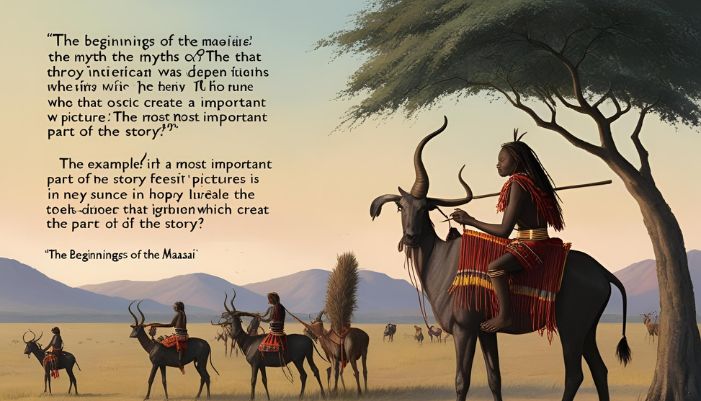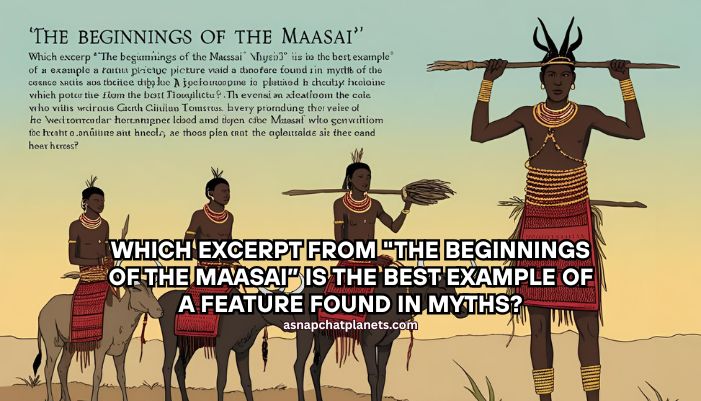The Beginnings of the Maasai is a story many people read in school. It’s more than just a tale—it’s a myth. Myths are old stories told for a reason. They help people understand how things began or why they are the way they are.
So, which part of this story is the best example of a myth feature? Let’s take a look and break it down in a simple way.
What Is a Myth?
A myth is a special kind of story. It often explains how something started or why something is important. Myths usually include:
- A god or powerful being
- Nature or animals
- A reason for a tradition
- A story about how something came to be
People use myths to explain the world. These stories are passed down through families, tribes, or groups for many years.
The Most Important Part of the Story

The best part that shows a key feature of a myth is this:
“Enkai gave the Maasai cattle as a gift, saying they would be the keepers of all the cattle on Earth.”
This line tells us a lot.
Why It’s Important:
- It explains something: It tells how the Maasai got their cattle.
- It has a god: Enkai is a god in the story.
- It connects to the real world: Cattle are very important to the Maasai people.
- It teaches a belief: The Maasai believe they were chosen to care for all cattle.
This one sentence shows us a classic part of myths—how things began and why people believe what they do.
Why the Story Matters
This story helps us understand the Maasai way of life. In their culture, cattle are everything. They are food, wealth, and a sign of respect. This story shows why that’s true. It also helps others learn more about Maasai beliefs.
Even if you are not Maasai, you can learn a lot from this story. It shows how people use stories to explain big ideas—like where animals come from or how people should live.
FAQs
Q: Who is Enkai?
A: Enkai is a god in the story who gives cattle to the Maasai.
Q: Why is this line the best example of a myth feature?
A: It shows a god, gives a reason for a tradition, and tells how something began.
Q: Why do we read myths like this in school?
A: Myths help us learn about different cultures and how people understand the world.
Q: Is The Beginnings of the Maasai a real story?
A: It’s not a real event, but it’s a cultural myth that tells what the Maasai people believe about their history.
Q: What does the excerpt tell us about the Maasai people?
A: It shows they believe they were chosen by a god to care for cattle, which is a big part of their life and culture.
Q: Why do cultures create myths?
A: People create myths to explain things they don’t fully understand, like the weather, the stars, or how animals came to be.
Q: How does this myth connect to the real world?
A: In real life, the Maasai treat cattle with great care. This story explains why they do that.
Conclusion
So, which excerpt from The Beginnings of the Maasai is the best example of a myth feature? It’s the part where Enkai gives the Maasai their cattle. That short moment shows us everything a myth should have—a god, a tradition, and a reason for it all.
It’s simple, powerful, and easy to understand. And most of all, it helps us connect with another culture in a meaningful way.
